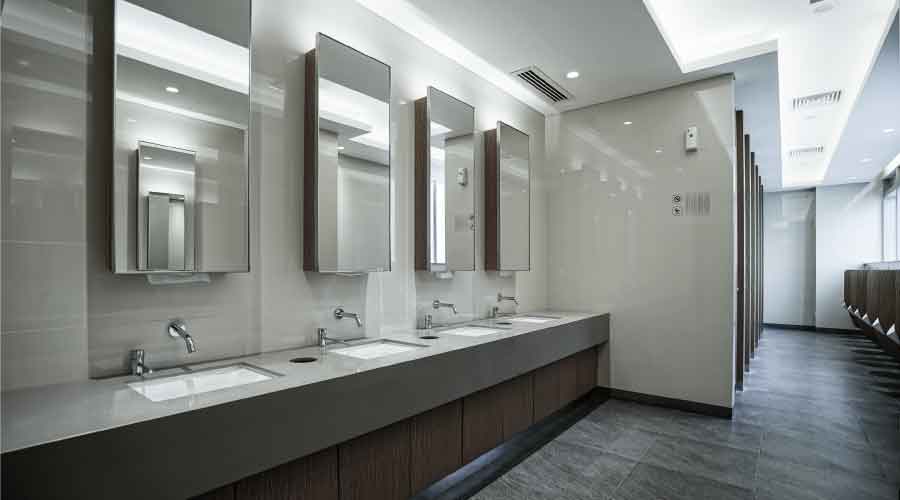What to Expect from Restrooms Post-Pandemic
Evolving expectations among occupants returning to facilities means managers need to reconsider their approaches to restrooms.
By Thomas A. Westerkamp, contributing writer
OTHER PARTS OF THIS ARTICLEPt. 1: This Page
The evolution of restrooms in institutional and commercial facilities in the last decade – and especially the last three years – has been remarkable. From water conservation and hygiene to occupant safety and health, new and emerging issues in restrooms present maintenance and engineering managers with more challenges than ever.
When planning upgrades to restrooms and plumbing systems, managers have an ever-expanding range of options to consider. By assessing their organizations’ restroom and plumbing needs and understanding changes in flush valves, faucets, toilets, stall doors, panels, privacy urinal screens and splash guards, managers can deliver successful upgrade projects for their facilities.
Knowing needs
Assessing restroom and plumbing needs focuses on water, which means cost. Due to the aging infrastructure of most facilities, many water systems are the targets of major capital expenditures. An indication of this is how the water rates are changing.
A few years ago, the rate for water and a percentage of the water rate for sewer were added to calculate the total rate. Now the sewer rate is 100 percent of the water rate, and it is even higher in some jurisdictions as special capital improvement fees are added. Managers cannot do anything about the water and sewer rate, but they can control costs by controlling the volume used. Since water and sewer rates are based on water consumption, managers can produce a double payback by lowering a facility’s water use.
Assessing needs includes regulatory, functional and aesthetic issues. Managers can determine the status of these issues by observing and by testing restroom conditions such as age, cleanliness of surfaces, odor, water flow rates, methods and volume. Given that many facilities are in the post-pandemic, return-to-work mode, now is an excellent time to upgrade.
Many employees have become used to the cleanliness and privacy of their own home restrooms, so fears of restrooms that are unsanitary with strong odors might add to their reluctance to return to the workplace. Over one-half of the working population view poor restroom conditions as a sign of poor management and executives who do not care about the health and safety of occupants. Beyond being a turn-off to users, outdated fixtures can mean higher energy and water use every day for organizations.
Regulations continue to evolve, so managers must frequently check for regulatory changes, especially before specifying new equipment. Accessibility guidelines for restrooms related to space, design and the placement of fixtures are extensive and address: access parallel and forward; right- and left-hand approaches; maneuvering space; mounting height; location; type; and even the content of signage. For example, accessible urinals must have: 30- to 48-inch approach clearance; a maximum 48-inch height for the flush handle; a 17-inch maximum distance from floor to rim; and 13 inches from the wall to the front of the rim.
Before making any new purchases, managers should check with the local authorities having jurisdiction to make sure plans address the latest updates to guidelines and regulations.
Proper venting also is essential. Whether located on the roof or the wall, managers often overlook vents because they are out of sight. Measures to ensure the condition and performance of vents include: specifying galvanized steel or plastic equipment: ensuring good penetration seals with no cracks or separation to prevent wall and roof leaks; installing bird guards to prevent birds, squirrels and other small animals from entering wall units; and cleaning, painting exterior parts to ensure long life.
Thomas A. Westerkamp is a maintenance and engineering management consultant and president of the work management division of Westerkamp Group LLC.
Related Topics:












